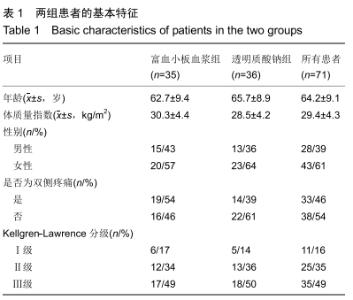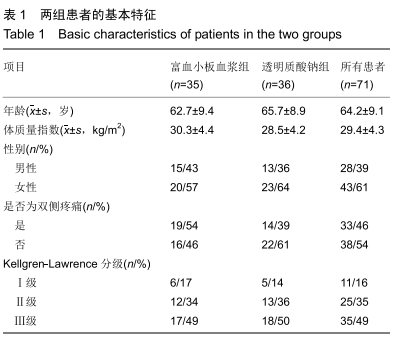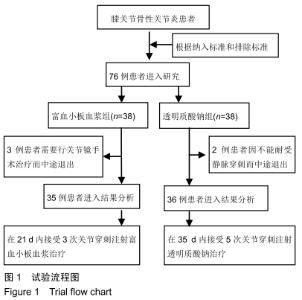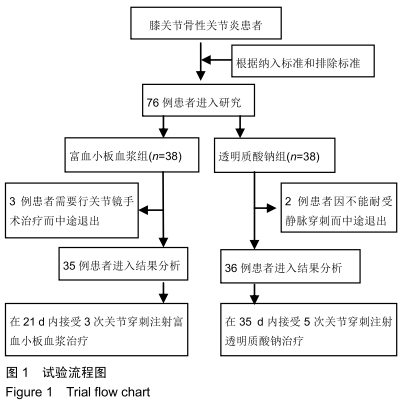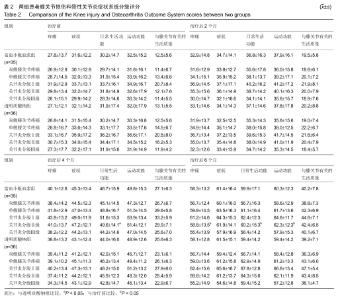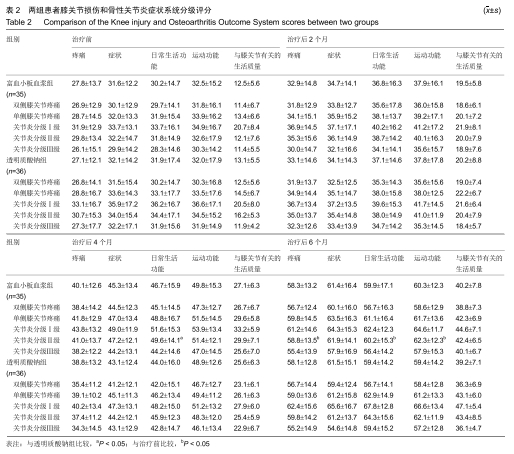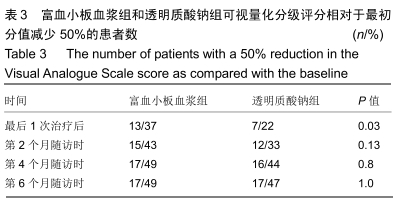[1] PRIOR JA, JORDAN KP, KADAM UT. Associations between cardiovascular disease severity, osteoarthritis co-morbidity and physical health: a population-based study. Rheumatology (Oxford). 2014;53(10):1794-1802.
[2] RODRIGUEZ-MERCHAN EC. Topical therapies for knee osteoarthritis. Postgrad Med. 2018;130(7):607-612.
[3] WEHLING P, EVANS C, WEHLING J, et al. Effectiveness of intra-articular therapies in osteoarthritis: a literature review. Ther Adv Musculoskelet Dis. 2017;9(8):183-196.
[4] KRUSCHE-MANDL I, KAIDER A, STARLINGER J, et al. Implementation of Electrical Auricular Acupuncture and Low Frequency Modulated Electric Current Therapy in Pain Management of Patients with Knee Osteoarthritis: A Randomized Pilot Trial. J Clin Med. 2019;8(8): E1229.
[5] EVANS CH, KRAUS VB, SETTON LA. Progress in intra-articular therapy. Nat Rev Rheumatol. 2014;10(1):11-22.
[6] O'NEILL EM, ZALEWSKI WM, EATON LJ, et al. Autologous platelet-rich plasma isolated using the Haemonetics Cell Saver 5 and Haemonetics MCS+ for the preparation of platelet gel. Vox Sang. 2001;81(3):172-175.
[7] COLE BJ, SEROYER ST, FILARDO G, et al. Platelet-rich plasma: where are we now and where are we going? Sports Health. 2010;2(3):203-210.
[8] YUN YR, WON JE, JEON E, et al. Fibroblast growth factors: biology, function, and application for tissue regeneration. J Tissue Eng. 2010;2010:218142.
[9] ZELLNER J, MUELLER M, BERNER A, et al. Role of mesenchymal stem cells in tissue engineering of meniscus. J Biomed Mater Res A. 2010;94(4):1150-1161.
[10] 汤其元,马亚萍,张斌,等.骨组织再生工程中富血小板血浆的应用与研究进展[J].中国组织工程研究,2019,23(4):597-605.
[11] Bolander ME. Regulation of fracture repair by growth factors. Proc Soc Exp Biol Med. 1992;200(2):165-170.
[12] WERNECKE C, BRAUN HJ, DRAGOO JL. The Effect of Intra-articular Corticosteroids on Articular Cartilage: A Systematic Review. Orthop J Sports Med. 2015;3(5): 2325967115581163.
[13] ADAMS ME, LUSSIER AJ, PEYRON JG. A risk-benefit assessment of injections of hyaluronan and its derivatives in the treatment of osteoarthritis of the knee. Drug Saf. 2000;23(2):115-130.
[14] EVERTS PA, KNAPE JT, WEIBRICH G, et al. Platelet-rich plasma and platelet gel: a review. J Extra Corpor Technol. 2006;38(2):174-187.
[15] 李明,张长青.富血小板血浆临床应用及其生物材料性能[J].中国组织工程研究,2011,15(8):1445-1448.
[16] FLANDRY F, HUNT JP, TERRY GC, et al. Analysis of subjective knee complaints using visual analog scales. Am J Sports Med.1991;19(2):112-118.
[17] WILLIAMSON T, SIKKA R, TOMPKINS M, et al. Use of the Knee Injury and Osteoarthritis Outcome Score in a Healthy United States Population. Am J Sports Med. 2016;44(2): 440-446.
[18] JÜNI P, REICHENBACH S, DIEPPE P. Osteoarthritis: rational approach to treating the individual. Best Pract Res Clin Rheumatol. 2006;20(4):721-740.
[19] BANNURU RR, OSANI MC, VAYSBROT EE, et al. OARSI guidelines for the non-surgical management of knee, hip, and polyarticular osteoarthritis. Osteoarthritis Cartilage. 2019; 27(11):1578-1589.
[20] SAMPSON S, GERHARDT M, MANDELBAUM B. Platelet rich plasma injection grafts for musculoskeletal injuries: a review. Curr Rev Musculoskelet Med. 2008;1(3-4):165-174.
[21] EVERTS PA, OVERDEVEST EP, JAKIMOWICZ JJ, et al. The use of autologous platelet-leukocyte gels to enhance the healing process in surgery, a review. Surg Endosc. 2007; 21(11):2063-2068.
[22] 中华医学会骨科学分会关节外科学组.骨关节炎诊疗指南(2018年版)[J].中华骨科杂志,2018,38(12):705-715.
[23] IANNITTI T, LODI D, PALMIERI B. Intra-articular injections for the treatment of osteoarthritis: focus on the clinical use of hyaluronic acid. Drugs R D. 2011;11(1):13-27.
[24] LAJEUNESSE D, DELALANDRE A, MARTEL-PELLETIER J, et al. Hyaluronic acid reverses the abnormal synthetic activity of human osteoarthritic subchondral bone osteoblasts. Bone. 2003;33(4):703-710.
[25] HEMPFLING H. Intra-articular hyaluronic acid after knee arthroscopy: a two-year study. Knee Surg Sports Traumatol Arthrosc. 2007;15(5):537-546.
[26] KAUX JF, LIBERTIAUX V, DUPONT L, et al. Platelet-rich plasma (PRP) and tendon healing: comparison between fresh and frozen-thawed PRP. Platelets. 2019:1-5.
|
